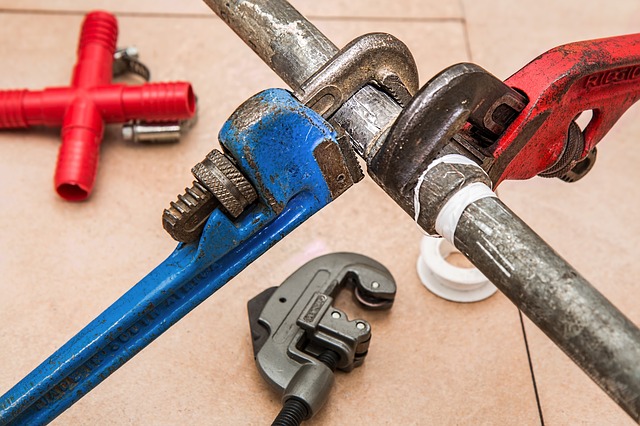The foundation of your home is the most important part of your dwelling. It’s the load-bearing portion of the entire structure. Sadly, many homeowners completely ignore their foundations – “out of sight and out of mind.”
This is a huge mistake.
Repairing a damaged foundation can be somewhat expensive and disruptive. According to HomeAdvisor, most homeowners will pay around $4,000 to repair foundation issues.
To avoid a costly repair, protect your foundation by maintaining it. Remember, your house is an investment you’ll want to protect. With that in mind, Jim, the owner at Granite Foundation Repair, a professional foundation repair company servicing DFW area, shares 7 foundation maintenance tips to get you started.
1. Have your plumbing inspected yearly
Under-slab leaks are a major cause of foundation problems. A sizeable leak will seep into the soil that surrounds your house, and can even cause your foundation to shift.
These leaks can occur in sprinkler systems, freshwater lines, sewer lines and other parts of your plumbing system.
If you suspect that you have a plumbing leak in your home, hire the services of a licensed plumber. To test for any leaks, the plumber will most likely perform a hydrostatic test.
2. Inspect your home for damage, cracks, and insects
It pays to inspect your home for any indications of trouble. If your foundation is cracked, inspect the cracks’ size as well as where they are coming from. You would also want to plug any holes or hairline cracks you see as trailing insects can hasten foundation deterioration.
3. Make certain your structure is on a proper slope
This is a good tip for maintaining your foundation. A flat yard leading up to your house’s foundation can cause just as much trouble as one that slopes toward the house.
The goal of grading is simple: create a slope that will carry water from your house. The slope doesn’t need to be as steep as you might think. Experts recommend the slope to be 2% or ¼ inch per foot. Grading your yard will allow water to flow across the surface to a more desirable area and prevent foundation damage.
4. Install a good foundation drainage system
Too much water around your foundation is just as bad as too little and can result in foundation upheaval. Upheaval occurs whenever your foundation or slab foundation moves upward due to soil expansion.
A foundation upheaval is usually responsible for bumps that appear gradually in a concrete slab floor. In the U.S., foundation upheaval is responsible for 70% of all foundation failures.
It’s a common problem in areas with expansive clay soils like Texas. In wet conditions, the expansive clay soils absorb water and swells. Over time, the swollen soil begins to push up against the structure above it causing structural damage.
To prevent foundation upheaval, ensure that your home has proper drainage.
5. Maintain a consistent moisture level around your foundation
This is especially important in areas that have expansive clay soils like Dallas and Fort Worth Texas. Repeated variations in soil moisture content are often the number one cause of differential soil movements, which can result in misalignment of windows and doors, masonry and drywall cracking and un-level floors.
By keeping the moisture content of the soil under the foundation constant, you can help avoid such problems.
An automated sprinkler system can help in this regard. It waters in a slow, systematic manner.
6. Protect your foundation from large trees
Trees are wonderful, no doubt. However, the often serious damage sometimes caused by their roots is not so wonderful. It could potentially mean thousands of dollars in repair costs to plumbing systems, pavement, backyards, and foundations.
Selecting the wrong type of tree is often the culprit, as is poor planning as regards to planting it in a particular spot.
To survive, trees require moisture and nutrients. The process through which that is achieved is known as transpiration. One sizeable tree can absorb as much as 150 gallons of water per day from the soil.
When such a tree is planted close to your home’s foundation, it could spell trouble. In fact, such trees are well known for affecting slab foundations in North Texas, where expansive clay soils can be greatly impacted by water.
7. Install a root barrier, if needed
The beauty of trees is greatly appreciated. These are also a much-needed part of our eco-system. However, some trees can also cause damage to your home’s foundation. This is especially true if the tree has an extensive root system.
Willow trees are a good example. These may not be the tallest tree in the forest but have extensive root systems. To prevent damage to your foundation from such trees, you may need to install a root barrier. Root barrier is a physical underground wall, placed so that structures and plants may cohabit happily together.
With these 7 general foundation tips, you should be able to keep your home’s foundation in tiptop shape. If you notice any sign of damage, please contact a good foundation repair company as soon as possible.
Guest post from Jim Oursler, Granite Foundation Repair
For commercial property inspections in the Dallas/Fort Worth area, including a thorough and informative home inspection report, learn more at
or request a quote for a commercial inspection at
682-351-2267



